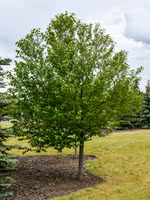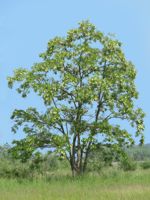Mon-Fri 9am - 5pm Mountain time
Mayday Cherry vs Black Locust
Prunus padus
Robinia pseudoacacia
NOT AVAILABLE THIS SEASON - MIGHT RETURN
Mayday Cherry is a small deciduous tree known for its early blooming and fragrant white flowers.
A favourite specimen tree on prairie homesteads, Mayday Cherry produces small black berries that are inedible to people but highly desirable to birds.
Black Locust is an attractive tree. Its distinctive leaves are made of about a dozen bright green leaflets. It also notable for its fragrant white flowers, which smell of citrus.
Black Locust can grow in many situations, but prefers dry areas with lots of sun. It is robust and is an excellent choice for establishing shade in dry, open areas.
Important note: Much of the Black Locust is toxic to humans and livestock, including seeds, bark, and leaves.
Mayday Cherry Quick Facts
Black Locust Quick Facts
Toxicity: seeds and leaves are toxic if ingested

